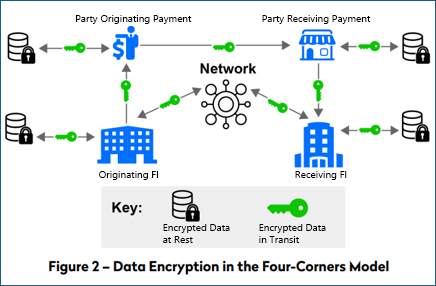When I hear conversations surrounding the topic of quantum computing, I think of the 1989 television series, Quantum Leap. The sci-fi hit entertained viewers by the characters ability to travel through time and correct wrong decisions. While quantum computing won't let us send payments into the future through time travel, it will impact and change current computing and payment processing!
We need to begin understanding what quantum payments mean to the financial industry We don't need to make a quantum leap whenever quantum computing becomes part of everyday life.
You may be asking:
- What is quantum computing?
- How and why is quantum computing going to impact payment processing?
- Why is it so important to have a strategy and investment in quantum?
- What are the risks?
- Where do you start with understanding quantum computing in payments?
Well, this payments expert needed to find answers to these questions, so I joined the Quantum Project Team with the Payments Innovation Alliance (PIA) last year. Being a novice, I had one of our team members describe quantum computing to me by comparing today's computer logic to a light switch. You turn it on and off by flipping the switch back and forth. In contrast, quantum computing is like a dimmer switch. It's not just zeros and ones anymore. And let's note that this difference requires a change in hardware and the process by which the light is turned on and off.
This analogy helped me to make sense of the processing potential, but I needed to learn more. So, I worked with the project team to develop the white paper, "Protecting Payments in the Quantum Era: What You Need to Know ." The paper provides a basic explanation of how quantum differs from classical computing, the potential it has in the financial industry focusing on payments, and the threats quantum computing poses to current cryptographic standards.
Think of quantum computing as a supercomputer able to complete tasks with lightning speed and an impressive degree of accuracy. The paper's opening statement explains that the technology behind quantum computers place the "computing world on the cusp of a paradigm shift that is unlocking unprecedented computational power." It's anticipated by some technologists that by the end of the decade, quantum computing could "provide substantial innovation in finance, payments, fraud detection, anti-money laundering detection and behavior analysis."
In the paper, we look at the current state of computing using the Four Corner Model for processing payment transactions. The padlock in the diagram below stands for security protection, which is coding or encryption around the transaction. Each corner is storing, sending, and receiving encrypted data using current standards. Cracking the code and breaking the lock opens data to be harvested and misused by bad actors. A quantum computer can quickly calculate the encryption code, putting data at risk.

In the paper, we point out the threat quantum poses on the financial industry at its current state, as "research indicates a potential of up to $3.3 trillion in indirect losses," is very possible. The National Institute of Standards and Technology (NIST) reports that quantum computers "could break the current encryption that provides security and privacy for just about everything we do online."
The solution for payments network participants: Fight quantum with quantum. Advanced cryptographic algorithms in quantum computing have additional layers of calculated code, resulting in greater data protection and making payments more secure. NIST in its oversight role as the authority for security standards has approved three advanced algorithms with a higher level of security necessary for protecting payments data. NIST recommends technology experts begin working on implementing the new framework as soon as possible.
Like a new light switch, quantum computing will require upgrades to hardware and software. Full implementation could take years. Building a strategy to implement quantum computing within your information security program needs to be on your "to do" list today. Continue to learn and make sure that individuals within your financial organization understand the importance of preparing for upgrades now!



